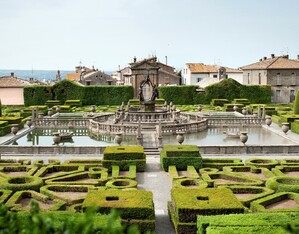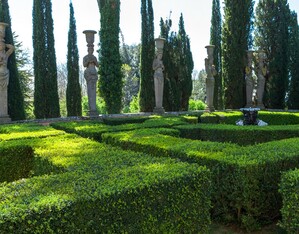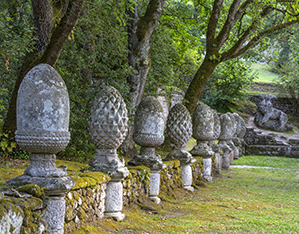
Myths and monsters
in the gardens of northern Lazio

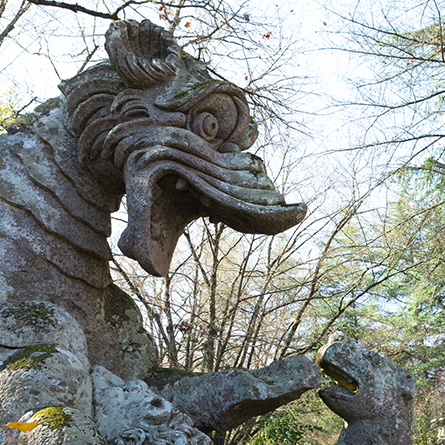
In a landscape resonating with Etruscan echoes there are several famous 16th-century gardens that amidst their lush vegetation still celebrate ancient myths and legends
The region of Tuscia viterbese, also known as Sacra Toscana(Holy Tuscany),is the birthplace of the legendary myth of Janus-Noah upholding the prestige of Etruscan culture (with Egyptian echoes no less) against the hegemony of classic Roman culture. In Villa Lante in Bagnaia, for example, the two ancient cultures find a balance, while in Soriano nel Cimino they combine with elements of biblical sacralisation. That of Tuscia is an extraordinary landscape, honed by the Etruscans with their sculptures, structural engineering feats, and major architectural traces: all elements are essential towards understanding certain 16th-century gardens. Patrons such as Vicino Orsini, Alessandro Farnese, Cristoforo Madruzzo and Giovanni Francesco Gambara initiated a legendary competition for the creation of the most fanciful buildings and inventions, often defying the models set by the Roman princely courts (such as for instance the Palazzo di Caprarola, transformed by Farnese into an outside the city royal residence after failing to be named Pope). Vicino Orsini’s garden in Bomarzo, famously known as Sacro Bosco (Sacred Woods) or Parco dei Mostri (Park of the Monsters), was already described in 1564 by humanist Annibal Caro as a kingdom of wonders and of “extravagant and supernatural things”.
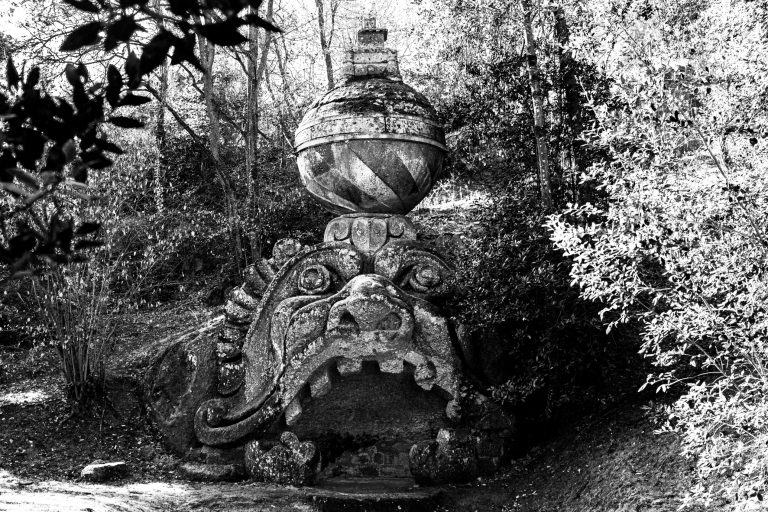
Caro suggested decorating the palace of Bomarzo with the subject of fall of the Giants struck by Jupiter’s lightning and buried by an avalanche of rocks. A mythical atmosphere that seems to come to life in the Sacro Bosco figures of gods and giants of myths and fables. The myth of Typhon, buried under the Etna volcano, can be the reference behind the simulated telluric movement that caused the Etruscan mausoleum to sink or the sliding of the leaning house and of the basin of the Pegasus fountain. Or perhaps, the epicurean Orsini believed that his arts would stimulate Mother Earth’s spontaneous production of living creatures.
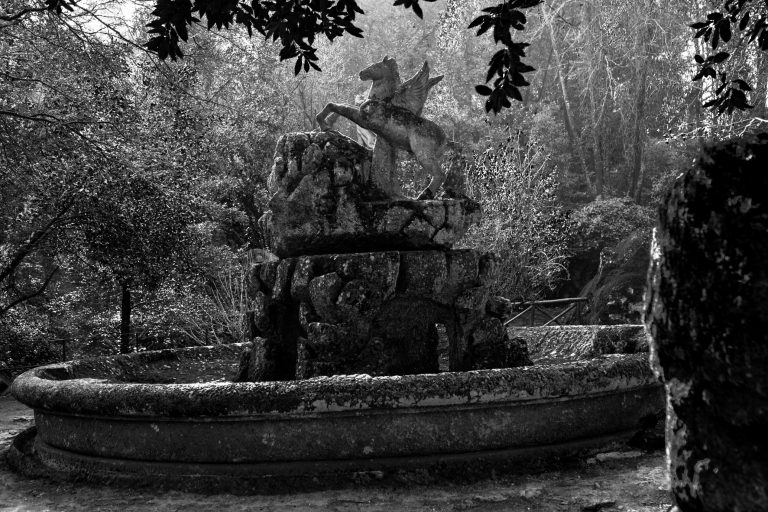
The Bosco di Bomarzo is an anti-world whose roots are set in the beyond: beyond classical history, by connecting to the mysterious world of the Etruscans; beyond western culture, with the aura of exotic worlds of the Orient and perhaps the Americas; beyond the human, with the exaltation of Orlando’s madness (Vicino himself speaks of the “follia del mio boschetto”, the madness of my grove); beyond life, with the descent into the realm of Hades, through the gates of Hell, and evoked by Cerberus, Persephone and other death symbols; and beyond nature and matter, with the excavation and transformation of erratic boulders and rocky crags. There might even be a light-hearted parody of the Sacred Mounts stations of the Cross: the pagan stations inside the wood could be counterparts of the Sacred Mount of the Bisentina Island, whose seven chapels provided the same indulgences as a visit to the seven churches of Rome.
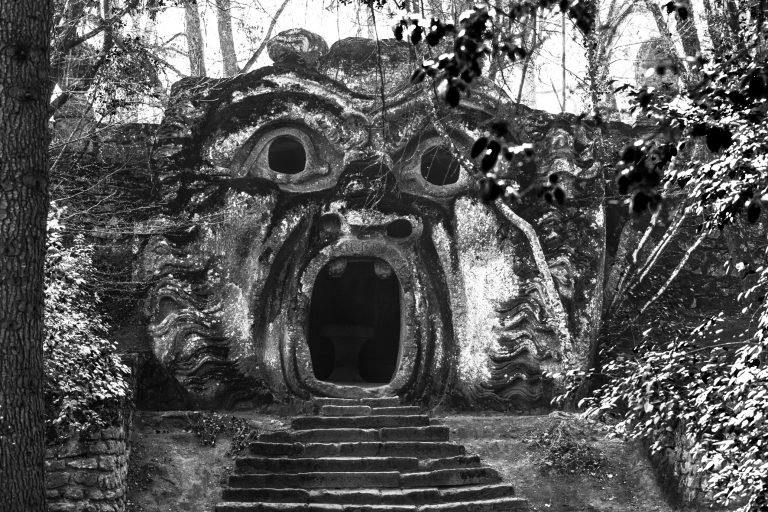
 Share on social
Share on social
